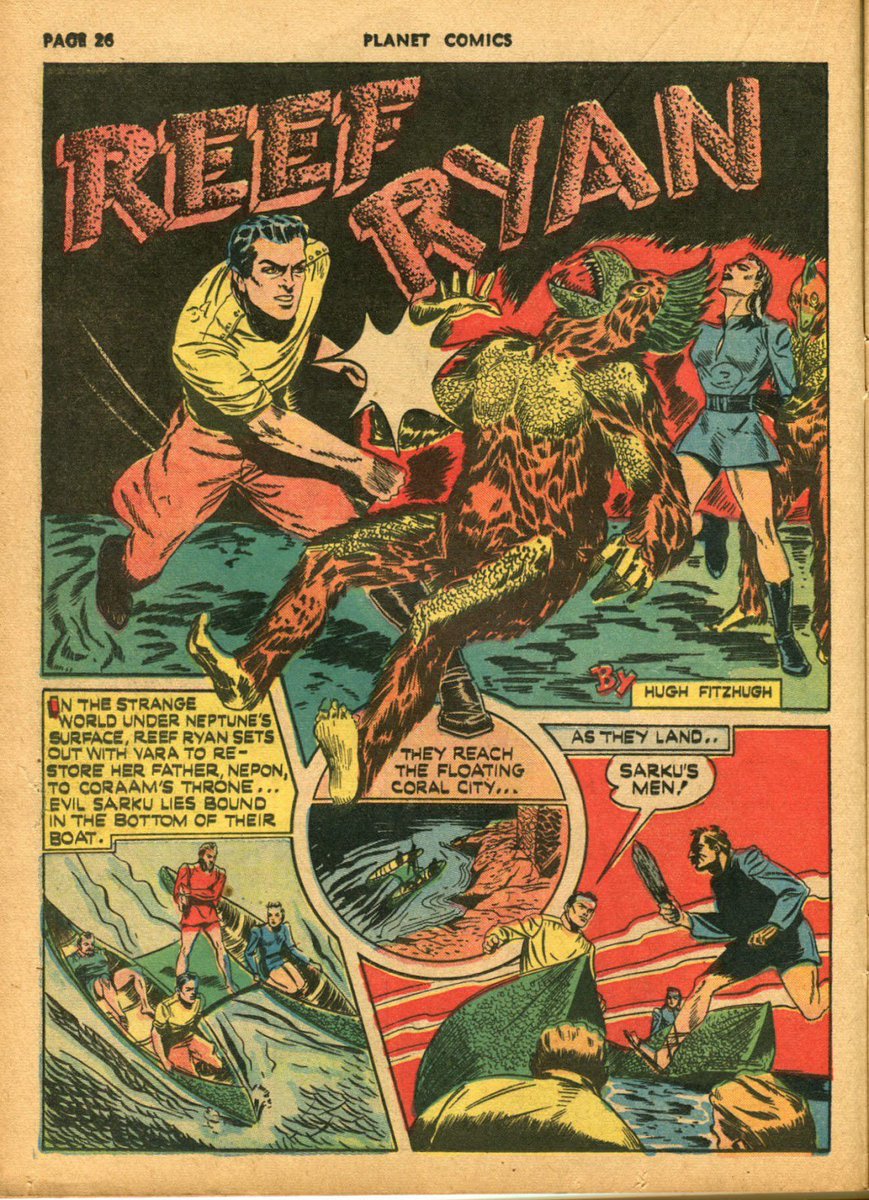Planet Comics ran from January 1940 to Winter 1953, and is widely credited as being the first comic dedicated solely to science fiction. 



The comic was a spin-off from the pulp magazine Planet Stories, and covered many of the same themes: ray guns, bug-eyed monsters and rowdy space girls. 

Planet Comics employed many leading women illustrators like Fran Hopper & Lily Renée, whose amazing life story became a 2011 graphic novel. 

Regular Planet Comics characters included Mars God of War, Mysta of the Moon, Reef Ryan, Gale Allen and the Girl Squadron, and The Red Comet. 







Planet Comics often featured 'good girl' covers: improbable dresses and poses! This pin-up style was also used by Planet Stories magazine. 



By the early 1950s Planet Comics was struggling, sometimes producing only one issue a year, and the title finally closed in 1953. 



There's certainly a lot of 'John Carter of Mars' type action going on in many editions of Planet Comics. 



(And for everyone asking "whatever happened to Spurt Hammond?" he was a minor character in the first 10 issues of Planet Comics, before being replaced by Cosmic Corrigan in March 1941) 



• • •
Missing some Tweet in this thread? You can try to
force a refresh



























